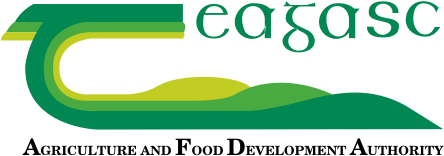Quality vs Quantity- How do I maximise silage yield per hectare?
Every winter the importance of good quality silage is emphasised. There are multiple benefits such as reduced concentrate input and increased weigh gain at lower costs. Teagasc Specialist Catherine Egan and Drystock Advisor Joe Hand have information and advice.
Variation in grass growth and feed supply due to weather conditions is inevitable. Therefore, it is important to build an appropriate rolling reserve into farm fodder plans; increasing feed storage capacity on farms, i.e., silage pits and effluent systems and improve quantity and quality of winter feed through improved soil and sward management.
As silage ground is closed on most beef farms, the first step is to determine the amount of silage that is required on the farm next winter. It is important to balance quality and quantity depending on the amount and type of stock kept on the farm next winter.
Table 1 below examines the amount of silage required next winter for a farmer with a 5 month winter. The farmer has 40 suckler cows, 35 weanlings (0-1 years) and 35 cattle (1-2 years). The total silage required is 631 tonnes and including a 1 month reserve 757 tonnes is required for this winter. This farmer will prioritise to make top quality first cut of silage and surplus bales > 70DMD for the cattle 0-1 & 1-2 years and then the second cut of silage for suckler cows can be poorer quality <70 DMD .
Table 1:Example Fodder Budget
| Number | Months | Total t | |
|---|---|---|---|
| Suckler Cows | 40 | 5 | 280 |
| 0 - 1 years old | 35 | 5 | 123 |
| 1-2 years old | 35 | 5 | 228 |
| 631 | |||
| Total demand including 1 month reserve | 757t | ||
You can complete a sample fodder budget for your farm by completing Table 2
Table 2:What fodder is required on your farm?
| A | B | C | ||
|---|---|---|---|---|
| Animal Type | No.of stock to be kept over winter | Number of Months (include a 4-6 week reserve) | Pit Silage needed tonnes / animal / month | Total Tonnes of Silage Needed Multiply (A x B x C) |
| Dairy Cows | ||||
| Suckler Cows | ||||
| 0 - 1 yar old | ||||
| 1 - 2 year old | ||||
| 2+ year old | ||||
| Ewes | ||||
| Total tonnes needed | D | |||
| Total bales needed (tonnes multiplied by 1.25) | E | |||
一批草青贮饲料(5吨/公顷的DM)需要125 kg N/ha (100 units/acre). Grass silage will take up on average 2.5kg/ha/day of N (2units/day), therefore apply N at least 50 days before cutting to ensure full crop N utilisation.. Phosphorus (P) and Potassium (K) are essential to maximise grass yields. Consult the most recent (3 to 5 years) soil test reports to determine the P and K requirements (in organic manure and fertiliser) for silage fields. Organic manures are an effective source of N, P & K and can provide a large proportion of crop P and K requirements at relatively low cost. This had been completed on most farms at this stage as outline in Table 3.
Table 3:1stCut Grass Silage N,P & K Requirements ( 5t/ha DM) (As per worksheet)
On this week’s episode of Beef Edge Podcast, Teagasc Drystock advisor Joe Hand discusses how to maximise silage yield this year on your farm. You can listen to the podcast below
Joe advises that sub-optimal soil fertility is probably the core reason that target silage yields and digestibility are not achieved. Through experiments carried out on farm with Walshfellowship student Louise Pierce, Joe explained the findings. He noted a difference in yield of 3.8 t vs 5 t from following recommended fertiliser rates which is a difference of 1.2 tonne yield dry matter per hectare or a 30% increase yield.
Recommended rates give results

Joe highlighted that poor soil fertility can have a huge impact of silage yield and as a result the cutting date may be delayed a few weeks which will lead to poorer quality silage. When the correct fertiliser is applied you can produce the same yield 3 weeks earlier.
Asilage quality guideto complete for your farm developed by Joe & Louise is availablehere

